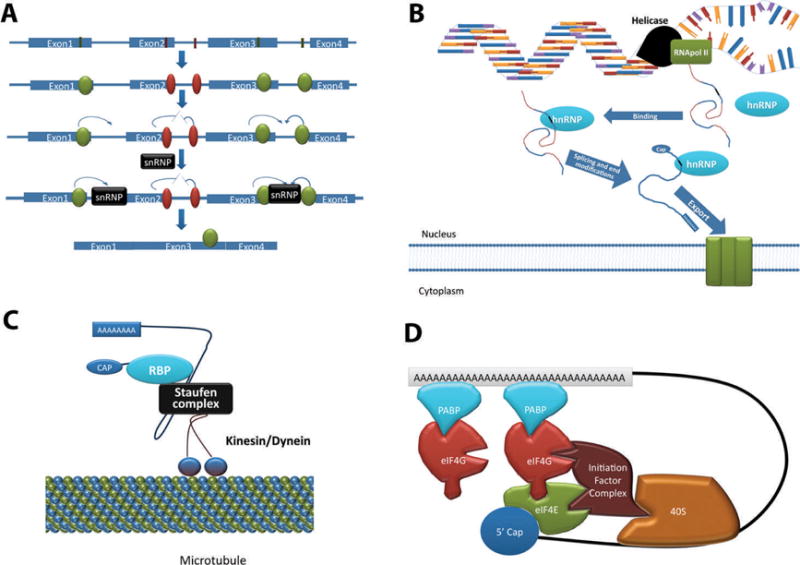Figure 2.

Known mechanisms of posttranscriptional regulation of messenger RNAs (mRNA). (A) Splicing. The top RNA is heterogeneous nuclear RNA (hnRNA) that includes recognition motifs in its exons and introns. Shown in red are enhancers, whereas those shown in green are silencers. Proteins that bind to these sequences are heterogeneous nuclear ribonucleoproteins (hnRNP). Those that encourage exon inclusion are activators, whereas those that discourage exon inclusion are repressors. The mechanism by which they perform this function is by interactions with small nuclear ribonucleoprotein particles (snRNP), particularly U1 and U2. Some hnRNPs remain bound to the transcript after splicing, and will often mediate export from the nucleus. (B) Formation of mature mRNA. Precursor mRNA transcribed from DNA contains motifs that hnRNPs recognize and with which they associate. Splicing occurs simultaneously with cap and tail modifications. This process yields mature mRNA that is exported to the cytoplasm. (C) Transport complex. RNA-binding proteins (RBP) can associate with a STAUFEN complex that associates with kinesin or dynein. This will allow transcripts to be transported along the cytoskeleton to where they are needed. Usually RBPs block the association of the initiation complex, keeping the transcript translationally inactive during transportation. (D) “Closed loop” model of translation initiation. A long poly(A) tail attracts poly(A)-binding protein (PABP), which associates with eukaryotic translation initiation factor 4G (EIF4G). EIF4E has a high affinity for the 59 cap and for EIF4G. An initiation factor complex associates with EIF4G and EIF4E. This complex binds the 40S subunit. The 40S subunit along with several initiation factors (together termed “43S”) will scan the transcript for the start codon, at which point the initiation translational RNA will bind and recruit the large subunit (60S subunit), starting translation.
